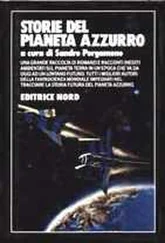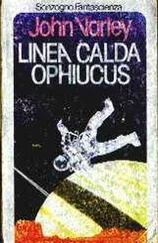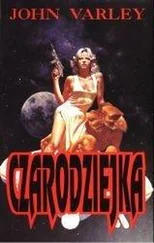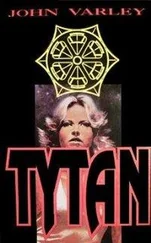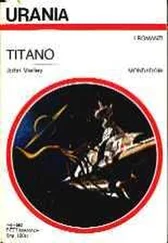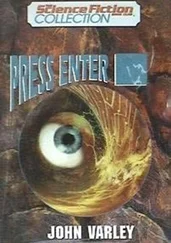John Varley - Mammoth
Здесь есть возможность читать онлайн «John Varley - Mammoth» весь текст электронной книги совершенно бесплатно (целиком полную версию без сокращений). В некоторых случаях можно слушать аудио, скачать через торрент в формате fb2 и присутствует краткое содержание. Жанр: Фантастика и фэнтези, на английском языке. Описание произведения, (предисловие) а так же отзывы посетителей доступны на портале библиотеки ЛибКат.
- Название:Mammoth
- Автор:
- Жанр:
- Год:неизвестен
- ISBN:нет данных
- Рейтинг книги:3 / 5. Голосов: 1
-
Избранное:Добавить в избранное
- Отзывы:
-
Ваша оценка:
- 60
- 1
- 2
- 3
- 4
- 5
Mammoth: краткое содержание, описание и аннотация
Предлагаем к чтению аннотацию, описание, краткое содержание или предисловие (зависит от того, что написал сам автор книги «Mammoth»). Если вы не нашли необходимую информацию о книге — напишите в комментариях, мы постараемся отыскать её.
Mammoth — читать онлайн бесплатно полную книгу (весь текст) целиком
Ниже представлен текст книги, разбитый по страницам. Система сохранения места последней прочитанной страницы, позволяет с удобством читать онлайн бесплатно книгу «Mammoth», без необходимости каждый раз заново искать на чём Вы остановились. Поставьте закладку, и сможете в любой момент перейти на страницу, на которой закончили чтение.
Интервал:
Закладка:
John Varley
Mammoth
This book is dedicated to John and Doris Varley.
My father, John E. Varley, died on January 13, 2005, at the age of 79, in Big Spring, Texas.
He was a very good man who led a good life and raised two good daughters, and me. He hated the Notre Dame Fighting Irish, the New York Yankees, and the Texas A&M Aggies, and loved most other Texas teams. He lived to see the Red Sox humiliate the Yankees, and a lot of people didn't.
FROM "LITTLE FUZZY, A CHILD OF THE ICE AGE"
Once upon a time in what would one day come to be known as the month of August, many, many years ago, in a place that would one day be known as Manitoba, a herd of mammoths came over the low hills to the south and into a gentle green valley rich with the scent of water.
There were twenty or twenty-five mammoths in the herd. Maybe thirty. No one is sure. What we do know is that the herd was made up of females of all ages and males younger than fifteen years old.
Mammoths did not live in families like we do, with a daddy and a mommy and their children, and maybe a granny and a grandpa. Mammoths were like our elephants today, and their families were bunches of sisters and aunts and nieces and young male mammoths.
When the males reached a certain age they became troublesome, bothering the females all the time... just like boys do today! When this happened, the older female mammoths ganged up on the youngster and pushed him out of the herd so he wouldn't cause so much trouble. The young male would then find his way to a herd of other males.
The leader of this herd was the oldest and largest female, what scientists call the alpha cow. We'll call her Big Mama.
Big Mama was old, maybe forty-five, maybe fifty; no one knows for sure because mammoths didn't have calendars and didn't write down their birthdays like we do, so they didn't know how old they were. But Big Mama had seen many winters and many summers, and she had been the alpha cow for many years. She was the wisest and strongest member of the herd, by far, and all the other females respected her without question.
It had been a hard summer. The places that would one day be called the Mississippi and Missouri river valleys had not seen any rain in many months but there had been plenty of lightning. The prairies were dry and there were many fires. Big animals like mammoths and bison and woolly rhinoceros had to keep moving to find enough food and water. Big Mama had not led her herd this far north in many years, but her memory was good and she kept them moving.
But others were there before them. They were mammoths, but they were strange, completely covered with hair.
To understand why this should be strange to Big Mama and her herd, you should know that there was more than one kind of mammoth, all those years ago. (There were also cousins of mammoths, called mastodons, but we don't need to worry about them.)
There were people back then, and they hunted the mammoths, but we don't know what they called them. Today, we call the two types of mammoth that lived in North America the woolly mammoth and the Columbian mammoth.
The woolly mammoths stayed mostly in the north, in what we now call Canada.
The Columbian mammoths stayed mostly in the south, sometimes as far south as what we now call Mexico!
But there were places where you could have found both kinds of mammoth.
Mammoths sometimes traveled great distances in search of food. Scientists call this migration. When woolly mammoths and Columbian mammoths met they usually didn't get involved with one another, any more than they concerned themselves with the giant ground sloths or woolly rhinos or giant bison they shared the plains with. You can see a scene very much like this in Africa today, with elephants and rhinos and giraffes and wildebeests grazing in the same areas peacefully, ignoring each other.
Most of the time the woolly mammoths and Columbian mammoths ignored each other, too.
But sometimes they didn't.
5
[e-book note: Yes, this novel starts with chapter 5! Chapters 2, 3, and 4 come a bit later in the book, with chapter 1 at the very end. Please don't "fix" this, because while pretty odd, it is what the author intended.]
THE helicopter flew low over a landscape as barren as any to be found on planet Earth. This was Nunavut. It wasn't a province and hardly a territory though they called it that. As far as Warburton was concerned they could give it all back to the Eskimos—which was exactly what Canada had done, back in 1999. Nunavut was 810,000 square miles of nothing much, one-fifth of Canada's land area. Warburton looked out his frosty window and was amazed to see a polar bear loping along a few hundred feet below him. Hunting? Fleeing the helicopter? He was tempted to ask the little Inuit with the brown and weather-beaten face, but realized he could never hope to deal with the man's name. He was introduced to Warburton at the Churchill airport as Charlie Charttinirpaaq, which sounded like a man with a bad cough and a severe case of the hiccups.
It was damn cold inside, but it didn't seem to bother Charlie. The little Inuit had pushed the hood of his parka back, revealing straight black hair that looked to have been groomed with rendered walrus blubber. His gnarled brown hands were bare. His coat had a handmade and hard-used look to it, but his boots looked like L.L. Beans. He seemed to feel Warburton's gaze, looked across the helicopter and smiled, revealing widely spaced but strong, brown teeth. Didn't they chew reindeer hides to soften them? Or was that just the women? Warburton's own outfit, purchased at Abercrombie & Fitch during his layover in Toronto and guaranteed by the salesman to protect him from a polar blizzard, was providing him no more warmth than a Banlon shirt.
He looked out his window and saw the first spot of color he had seen for more than five hundred miles. The heavily insulated modular dwellings that had been flown in dangling from the cargo hook of this very helicopter were almost the same color as the snow. But a short distance from them was a large half-cylinder tent, like a Quonset hut, made of blue and red canvas panels, strongly anchored with yellow poly ropes, near the bottom of a large, bare hill. This was Mammoth Seven.
Warburton saw people emerge from one of the trailers. One looked up and waved. Then they were setting down on a big red X in the middle of a red circle that had been painted on the snow. Warburton and Charlie unfastened their belts and waited for the pilot, another Inuit, to open the door and lower the ramp.
Once outside, Warburton realized he hadn't really been cold at all inside the damn helicopter. This, now this was cold.
There were two people hurrying out to meet him, all but indistinguishable in their puffed-up nylon and Gore-Tex outfits, hoods over their heads, eyes hidden by big blue sunglasses against the icy glare. Warburton followed them toward the big pressurized tent looming like some high-tech circus big top a hundred feet up the side of the hill. They trudged up the path and entered through a zipper in its side.
Inside, hoods off, Warburton recognized Dr. Rostov, formerly of the St. Petersburg Museum of Natural History, now the head of the Mammoth Seven recovery. They were in a square room about the size of a hotel elevator, which he knew from visits to previous mammoth sites to be a sort of air lock. The tent was held up by internal pressure, so the outer and inner doors of the room could not be opened at the same time.
Rostov started to open the inner door, then cleared his throat. Warburton realized the man was nervous.
Rostov had just a trace of an accent. He looked the part of a university professor, with an unkempt mane of white hair and a goatee that was more salt and pepper. But his face was almost as weathered as Charlie's, and he had an alarming red nose shaped like a potato. Though his hands were now clad in fur-lined gloves, Warburton knew the doctor had lost the tips of several fingers to frostbite. Being a mammoth hunter in the twenty-first century didn't entail the same risks as it had for our mammoth-hunting ancestors, but it was no picnic, and it took you to climates that could kill just as surely as a wounded and enraged mammoth.
Читать дальшеИнтервал:
Закладка:
Похожие книги на «Mammoth»
Представляем Вашему вниманию похожие книги на «Mammoth» списком для выбора. Мы отобрали схожую по названию и смыслу литературу в надежде предоставить читателям больше вариантов отыскать новые, интересные, ещё непрочитанные произведения.
Обсуждение, отзывы о книге «Mammoth» и просто собственные мнения читателей. Оставьте ваши комментарии, напишите, что Вы думаете о произведении, его смысле или главных героях. Укажите что конкретно понравилось, а что нет, и почему Вы так считаете.

